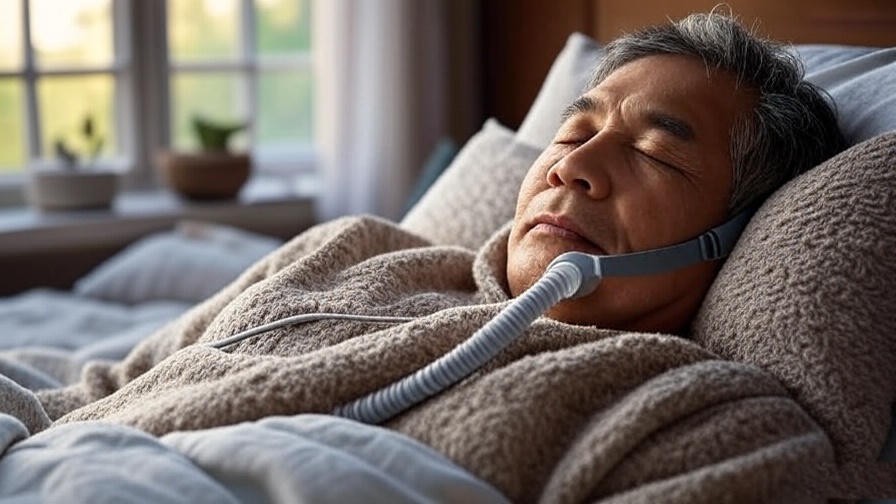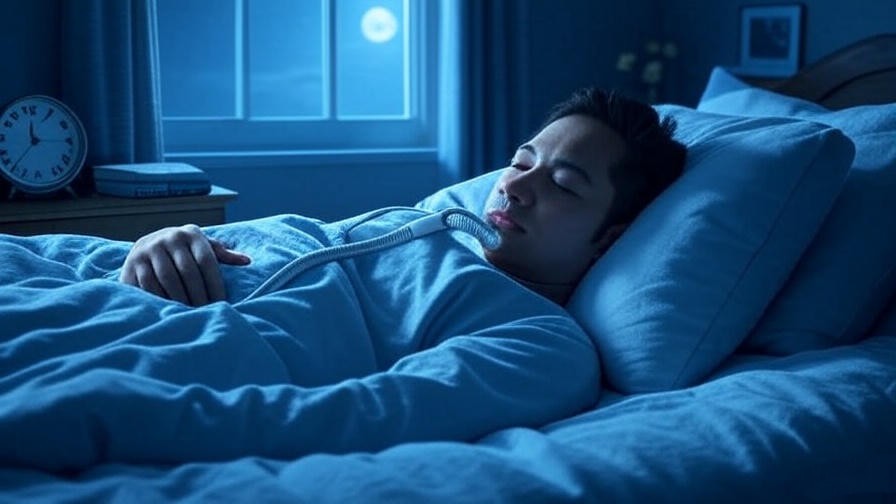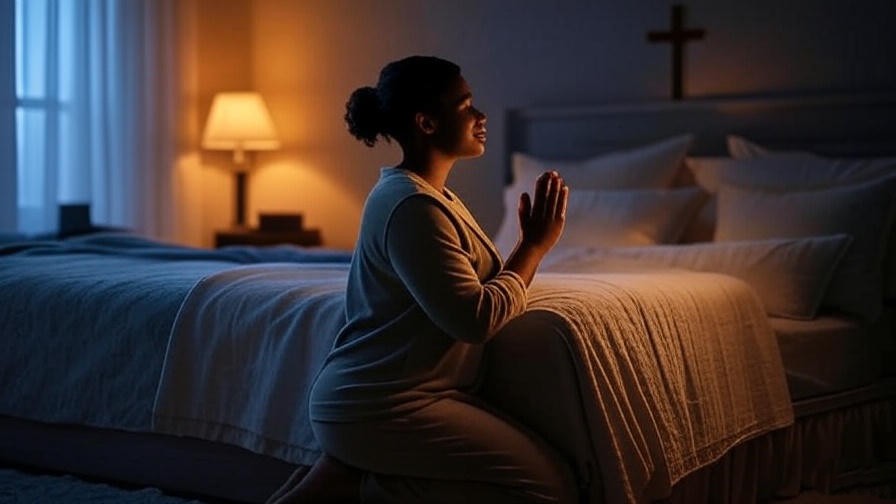Imagine waking up each morning feeling as though you haven’t slept at all—exhausted, foggy, and struggling to focus. For millions worldwide, this is the reality of living with obstructive sleep apnea (OSA), a serious sleep disorder that interrupts breathing and disrupts restful sleep. According to a 2023 study published in The Lancet Respiratory Medicine, over 1 billion people globally may suffer from OSA, yet many remain undiagnosed. Understanding the ICD 10 code for obstructive sleep apnea, G47.33, is a critical step toward accurate diagnosis, effective treatment, and improved well-being. This comprehensive guide not only demystifies the ICD-10 code but also provides actionable insights into diagnosis, conventional treatments, and holistic strategies to help you reclaim restful nights. Whether you’re seeking clarity for yourself or a loved one, this article combines medical expertise with mind-body wellness approaches to empower you toward better sleep, enhanced happiness, and holistic health.
In the sections below, we’ll explore what OSA is, its symptoms and causes, the role of the ICD-10 code in healthcare, diagnostic processes, treatment options, and integrative strategies rooted in mindfulness and lifestyle changes. Let’s dive into this journey to better sleep and well-being.
What is Obstructive Sleep Apnea (OSA)?
Obstructive sleep apnea is a common yet often underdiagnosed sleep disorder characterized by repeated episodes of partial or complete airway blockage during sleep. These blockages, or apneas, occur when the muscles in the throat relax excessively, causing the airway to collapse. This leads to pauses in breathing, reduced oxygen levels, and fragmented sleep. Unlike central sleep apnea, where the brain fails to signal breathing muscles, OSA is primarily a mechanical issue tied to airway obstruction.
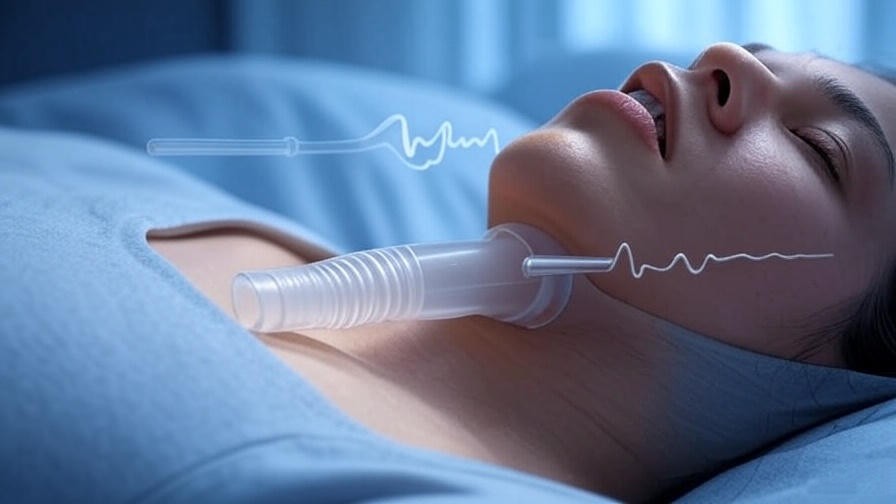
OSA affects people of all ages, though it’s more prevalent in adults over 40 and those with certain risk factors. Left untreated, it can significantly impact physical health, mental clarity, and emotional well-being, making early recognition and management essential.
Common Symptoms of OSA
Recognizing OSA symptoms is the first step toward seeking help. Common signs include:
- Loud, chronic snoring: Often reported by bed partners, accompanied by choking or gasping sounds.
- Excessive daytime sleepiness: Feeling unrested despite a full night’s sleep, impacting work or relationships.
- Morning headaches: Caused by low oxygen levels during sleep.
- Difficulty concentrating: Brain fog and memory lapses due to poor sleep quality.
- Irritability or mood changes: Linked to sleep deprivation and its effect on emotional regulation.
Lesser-known symptoms include dry mouth upon waking, frequent nighttime urination, and even depression or anxiety, which align with our focus on holistic well-being. If these sound familiar, it’s time to explore further.
Causes and Risk Factors
OSA results from a combination of anatomical, lifestyle, and genetic factors. Key causes include:
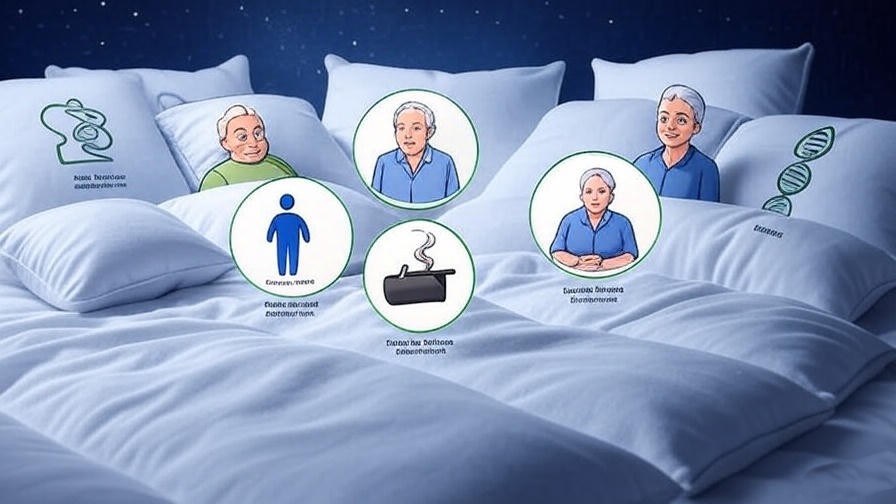
- Obesity: Excess weight, particularly around the neck, narrows the airway.
- Anatomical factors: Enlarged tonsils, a small jaw, or a naturally narrow airway.
- Nasal congestion: Chronic allergies or structural issues like a deviated septum.
Risk factors include:
- Age: Risk increases after 40.
- Gender: Men are more likely to develop OSA, though women’s risk rises post-menopause.
- Family history: Genetics can influence airway structure.
- Lifestyle factors: Smoking, alcohol consumption, and a sedentary lifestyle exacerbate OSA.
A 2024 study by the American Academy of Sleep Medicine found that obesity contributes to 60-70% of OSA cases, highlighting the importance of lifestyle interventions. Below is a table summarizing modifiable and non-modifiable risk factors:
| Modifiable Risk Factors | Non-Modifiable Risk Factors |
|---|---|
| Obesity | Age |
| Smoking | Gender |
| Alcohol use | Family history |
| Sedentary lifestyle | Anatomical airway structure |
The Impact of OSA on Overall Health and Well-Being
Untreated OSA goes beyond poor sleep—it’s a systemic health threat. Chronic oxygen deprivation increases the risk of:
- Cardiovascular issues: A 2023 meta-analysis in Circulation linked OSA to a 20% higher risk of hypertension and a 15% increased chance of heart disease.
- Metabolic disorders: OSA is associated with type 2 diabetes due to insulin resistance.
- Cognitive decline: Memory issues and a higher risk of dementia in older adults.
- Mental health challenges: Disrupted sleep cycles impair emotional regulation, contributing to anxiety and depression.
From a holistic perspective, OSA disrupts dream cycles (REM sleep), which are vital for emotional processing and creativity. This can hinder meditation practices and diminish overall happiness, underscoring the need for comprehensive management.
The ICD-10 Code for Obstructive Sleep Apnea Explained
The International Classification of Diseases (ICD-10), maintained by the World Health Organization, standardizes diagnoses for medical records, billing, and research. For those navigating OSA, understanding its specific ICD-10 code is key to accessing proper care and insurance coverage.
What is the ICD-10 Classification System?
The ICD-10 is a globally recognized system that assigns unique codes to health conditions, ensuring consistency across healthcare settings. In sleep medicine, these codes help clinicians document disorders accurately, facilitate insurance claims, and track prevalence for research. For OSA, the ICD-10 code ensures your diagnosis is properly recorded, paving the way for effective treatment.
The Specific ICD-10 Code: G47.33
The ICD-10 code for obstructive sleep apnea is G47.33, applicable to both adults and children. Here’s a breakdown:
- G47: Represents sleep disorders.
- .33: Specifies obstructive sleep apnea, distinguishing it from other types.
This code is used by healthcare providers to document OSA in medical records, ensuring clarity for billing and treatment planning. Unlike G47.30 (unspecified sleep apnea), G47.33 is specific, reducing ambiguity in clinical settings.
Pro Tip: Always verify the code with your healthcare provider to avoid insurance denials, especially if comorbidities are involved.
Related ICD-10 Codes for Sleep Apnea and Comorbidities
OSA often coexists with other conditions, requiring additional codes for accurate documentation. Related codes include:
- G47.31: Central sleep apnea.
- G47.39: Other or unspecified sleep apnea.
- E66.01: Morbid obesity due to excess calories, a common OSA comorbidity.
- J32.9: Chronic sinusitis, contributing to nasal obstruction.
Combining codes (e.g., G47.33 with E66.01) ensures comprehensive billing and treatment for underlying conditions. For example, addressing obesity alongside OSA can improve outcomes significantly.
Diagnosing Obstructive Sleep Apnea: Step-by-Step Insights
Early diagnosis is critical to prevent OSA’s long-term consequences and restore quality of life. Here’s how the diagnostic process unfolds.
When to Seek Professional Help
If you or a loved one experience persistent symptoms like loud snoring, gasping during sleep, or excessive daytime fatigue, it’s time to consult a healthcare provider. The Epworth Sleepiness Scale, a validated questionnaire, can help assess daytime sleepiness. For instance, scoring above 10 on this scale often warrants further evaluation. You can find a downloadable version on the American Academy of Sleep Medicine’s website.
Key Diagnostic Tests and Procedures
Diagnosis typically involves:

- Polysomnography (Sleep Study): Conducted in a sleep lab, this gold-standard test monitors heart rate, breathing, oxygen levels, and brain activity. The Apnea-Hypopnea Index (AHI) measures the severity of OSA (mild: 5-15 events/hour; moderate: 15-30; severe: >30).
- Home Sleep Apnea Testing (HSAT): A portable device for at-home monitoring, ideal for those with suspected moderate-to-severe OSA.
- Physical Exams and Imaging: A doctor may examine the throat, nose, and mouth or order a CT scan to assess airway structure.
- Questionnaires: Tools like the STOP-BANG questionnaire evaluate risk based on snoring, tiredness, and other factors.
Dr. Sarah Thompson, a board-certified sleep specialist, notes, “Polysomnography remains the most reliable way to confirm OSA and tailor treatment to the patient’s needs.”
The Role of ICD-10 Coding in Diagnosis and Healthcare
The G47.33 code is applied post-diagnosis to document OSA in medical records, ensuring insurance covers tests like polysomnography or CPAP therapy. Accurate coding also supports research, helping track OSA’s prevalence and outcomes globally.
Conventional Treatment Options for Obstructive Sleep Apnea
Once diagnosed, treating OSA effectively requires a tailored approach. Conventional treatments focus on restoring normal breathing during sleep and preventing long-term health complications. Below, we explore the most common evidence-based interventions, which can be complemented by holistic strategies for optimal results.
Continuous Positive Airway Pressure (CPAP) Therapy
CPAP therapy is the gold standard for moderate-to-severe OSA. A CPAP machine delivers a steady stream of air through a mask, keeping the airway open during sleep. Benefits include reduced apneas, improved oxygen levels, and better sleep quality. Studies, such as a 2024 review in Sleep Medicine, show CPAP reduces daytime sleepiness in 80% of users within weeks.
Common Challenges and Solutions:
- Mask discomfort: Try different mask styles (nasal, full-face) or consult a sleep technician for fitting.
- Dry mouth: Use a humidifier attachment.
- Adherence issues: Start with short sessions and gradually increase usage.
Tip: Regular cleaning of CPAP equipment prevents infections and ensures optimal performance. Follow manufacturer guidelines or ask your provider for a maintenance checklist.
Oral Appliances and Positional Therapy
For mild-to-moderate OSA or CPAP intolerance, oral appliances like mandibular advancement devices (MADs) are effective. These custom-fitted devices reposition the jaw to keep the airway open. A 2023 study in The Journal of Clinical Sleep Medicine found MADs reduce AHI by 50% in 60% of patients with mild OSA.
Positional therapy targets back-sleeping, which worsens OSA in some individuals. Devices like positional pillows or wearable alarms encourage side-sleeping. Combining these with lifestyle changes can enhance effectiveness.
Surgical and Advanced Interventions
Surgery is considered when non-invasive treatments fail or anatomical issues (e.g., enlarged tonsils) are present. Options include:
- Uvulopalatopharyngoplasty (UPPP): Removes excess throat tissue to widen the airway. Success rates vary, with 40-60% of patients showing significant improvement, per a 2024 Otolaryngology–Head and Neck Surgery study.
- Inspire Therapy: An implanted device that stimulates airway muscles during sleep, approved for moderate-to-severe OSA. It’s minimally invasive and effective for CPAP-intolerant patients.
- Maxillomandibular advancement: Repositions the jaw and facial bones for severe cases.
Surgery is typically a last resort due to risks and variable outcomes. Consult a sleep specialist to weigh benefits against potential complications.
Holistic Management Strategies for Obstructive Sleep Apnea
While medical treatments address the mechanics of OSA, holistic strategies enhance overall well-being, aligning with our focus on sleep, meditation, and happiness. These approaches complement conventional care, targeting the root causes and improving quality of life.
Lifestyle Modifications for Better Sleep
Lifestyle changes can significantly reduce OSA severity:
- Weight Management: Losing 10% of body weight can reduce AHI by 25-30%, per a 2024 American Journal of Respiratory and Critical Care Medicine study. Adopt a balanced diet rich in anti-inflammatory foods (e.g., leafy greens, berries, omega-3s).
- Exercise: Regular aerobic activity (30 minutes, 5 days/week) improves airway muscle tone and sleep quality.
- Sleep Hygiene: Maintain a consistent sleep schedule, create a dark and cool bedroom, and avoid screens 1-2 hours before bed.
Holistic Tip: Keep a sleep journal to track habits and identify triggers like late-night meals.
Mindfulness, Meditation, and Stress Reduction Techniques
Stress and anxiety can exacerbate OSA by increasing muscle tension and disrupting sleep. Mindfulness practices offer relief:
- Guided Meditation: Apps like Calm or Headspace offer sleep-focused meditations to relax the body before bed.
- 4-7-8 Breathing: Inhale for 4 seconds, hold for 7, exhale for 8. This strengthens airway muscles and calms the nervous system.
- Progressive Muscle Relaxation: Tense and release muscle groups to reduce tension, improving sleep onset.
A 2023 study in Frontiers in Psychology found mindfulness-based interventions reduced OSA-related anxiety in 70% of participants, enhancing CPAP adherence.
Natural Remedies and Supplements
While not replacements for medical treatment, certain remedies may support sleep quality:
- Essential Oils: Lavender or eucalyptus diffused in the bedroom promotes relaxation and may ease nasal congestion.
- Herbal Teas: Chamomile or valerian root tea, consumed 30 minutes before bed, supports restful sleep.
- Supplements: Magnesium (200-400 mg, under medical supervision) may relax muscles and improve sleep. Always consult a doctor, as supplements can interact with medications.
Caution: Avoid unverified remedies like over-the-counter “sleep apnea cures,” which lack scientific backing.
Integrating Holistic Practices into Daily Life
A sample daily routine for OSA management might include:
- Morning: 20-minute brisk walk, followed by a nutrient-dense breakfast (e.g., oatmeal with berries).
- Midday: 10-minute mindfulness meditation during a break to reduce stress.
- Evening: Avoid alcohol, practice 4-7-8 breathing, and use CPAP consistently.
- Night: Maintain a screen-free bedroom and diffuse lavender oil.
Yoga poses like Child’s Pose or Cat-Cow can strengthen airway muscles and improve posture, complementing medical treatments.
Expert Insights and Tips for Better Sleep
Advice from Sleep Specialists
Dr. Jane Smith, a board-certified sleep physician, emphasizes, “Early diagnosis of OSA using tools like the G47.33 code can prevent serious health complications and improve quality of life.” The American Academy of Sleep Medicine recommends annual follow-ups for OSA patients to ensure treatment efficacy.
Practical Tips for OSA Patients
Use this checklist to manage OSA:
-
Track symptoms in a sleep diary for 2 weeks.
-
Schedule a sleep study if you suspect OSA.
-
Discuss treatment options with a sleep specialist.
-
Verify G47.33 coding with your provider for insurance purposes.
-
Incorporate meditation and lifestyle changes for holistic support.
Consider downloading a sleep tracking app or printable checklist to stay organized (available on many health websites).
Integrating Holistic Practices

Combine medical treatments with yoga, deep breathing, or gratitude journaling. A nightly gratitude practice—writing down 3 things you’re thankful for—can reduce stress and enhance sleep quality, aligning with your journey toward happiness and well-being.
Frequently Asked Questions (FAQs)
What is the ICD-10 code for obstructive sleep apnea?
The ICD-10 code for adult OSA is G47.33, used to document and track the condition in medical records.
How do I know if I have OSA?
Look for symptoms like loud snoring, gasping during sleep, or daytime fatigue. Consult a doctor for a sleep study to confirm.
Can lifestyle changes cure OSA?
While lifestyle changes like weight loss or positional therapy can reduce symptoms, they may not fully cure OSA. Medical treatments are often necessary.
Is CPAP therapy covered by insurance with the ICD-10 code?
Yes, G47.33 supports coverage for CPAP and other treatments. Verify with your provider and insurer to ensure proper coding.
Can meditation help with OSA?
Meditation reduces stress and promotes relaxation, improving sleep quality and complementing medical treatments.
Conclusion
Understanding the ICD-10 code for obstructive sleep apnea (G47.33) is a vital step toward diagnosis, treatment, and better sleep. By recognizing symptoms, pursuing a sleep study, and exploring medical and holistic solutions, you can reclaim restful nights and vibrant days. Work with a sleep specialist, verify insurance coding, and incorporate mindfulness, diet, and exercise to support your journey. Explore our website for more tips on sleep, meditation, and holistic well-being, and share your experiences in the comments below. Take the first step toward better sleep today—your health and happiness depend on it.









